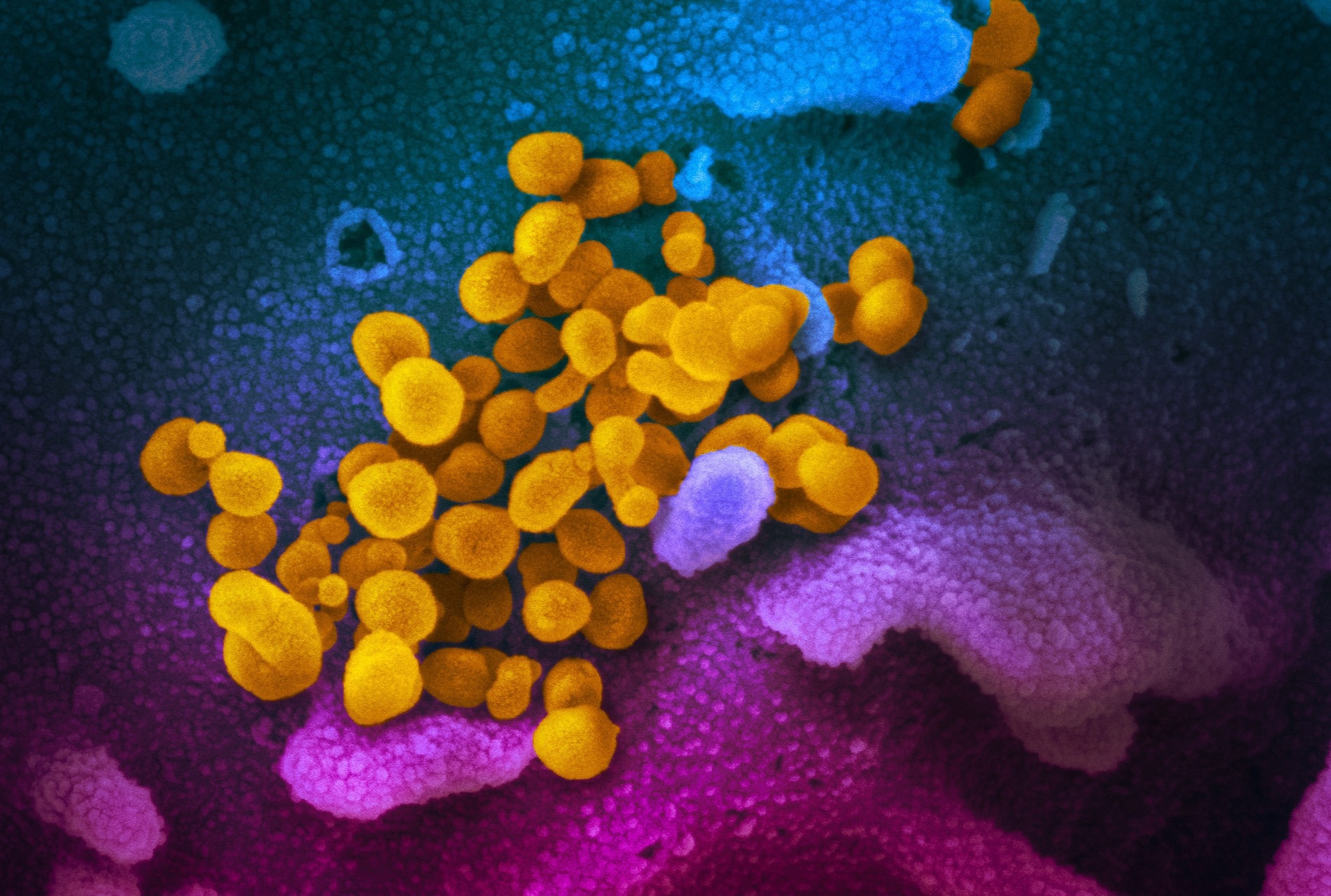In a recent research paper published as an accepted manuscript in the Clinical Infectious Diseases journal, scientists analyzed the population immunity against pre-Omicron and Omicron severe acute respiratory syndrome coronavirus 2 (SARS‑CoV‑2) variants in U.S. counties and states up until December 1, 2021.
 Study: Population immunity to pre-Omicron and Omicron SARS-CoV-2 variants in US states and counties through December 1, 2021. Image Credit: NIAID
Study: Population immunity to pre-Omicron and Omicron SARS-CoV-2 variants in US states and counties through December 1, 2021. Image Credit: NIAID
Background
In the United States (US), nearly 48 million SARS-CoV-2 cases and 780,000 coronavirus disease 2019 (COVID-19)-related deaths had been documented by December 1, 2021. In addition, an extra 26 million infections and 100,000 mortalities were reported in the US between December 1, 2021, and February 1, 2022.
Furthermore, the emergence of the SARS-CoV-2 Omicron variant highlights the necessity to identify areas of greatest vulnerability and how continuous viral evolution may diminish effective immunity. Achieving high levels of community immunity is critical for minimizing COVID-19 mortality and morbidity. COVID-19 and its vaccination both contribute to community-level SARS-CoV-2 immunity.
Estimates of community immunity at the local level are crucial for determining the risks of continuing COVID-19 transmission. Based on blood donation information, state-level estimates of vaccine- and infection-induced SARS-CoV-2 seroprevalence have been published, with estimates varying from 63.7% in Mississippi to 91.7% in Connecticut for May 7 2021. While these estimates offer a direct seroprevalence measure across the study groups, systemic variations among blood donors and the common public may influence them. Furthermore, these datasets do not provide estimates at the county level or reflect the fading of protection.
About the study
The current study assessed the immunological exposure and effective immunity toward future SARS-CoV-2 infection for each US county and state from 2020 to 2021 and how this has altered after the SARS-CoV-2 Omicron variant emerged. The researchers used modeled estimates of cumulative SARS-CoV-2 infections at the county and state levels and documented coverage for initial and booster COVID-19 vaccination. Further, they calculated the joint distribution of past SARS-CoV-2 infection and vaccination using the survey data.
Daily SARS-CoV-2 infection and vaccination data estimates were synthesized utilizing a Bayesian model. In addition, the estimates of comparative vaccination rates conditional on the status of infection were used to determine the proportion of the community with 1) SARS-CoV-2 immunological exposure (SARS-CoV-2-infected or vaccinated), 2) effective immunity against COVID-19, and 3) effective immunity against severe illness, for each US county and state from January 1, 2020, to December 1, 2021, using the Bayesian framework.
Furthermore, the authors estimated effective community immunity against SARS-CoV-2 infection and severe COVID-19 with time and effective immunity against the Omicron variant while accounting for immunological escape, using data on the time-course of vaccine- and natural infection-induced immunity.
Results
The study results demonstrated that the estimated proportion of the US population with a SARS-CoV-2 vaccination or infection history as of December 1, 2021, was 88.2%.
In US states, effective immunity against COVID-19 from pre-Omicron variants was between 27.6% and 40.4%, lower than the proportion immunologically exposed, adjusting for the waning of community immunity. Moreover, effective immunity toward the SARS-CoV-2 Omicron strain infection on December 1, 2021, was 21.8% nationwide, ranging from 14.4% in West Virginia to 26.4% in Colorado, after controlling for immune evasion and waning. The Omicron variant's introduction and takeover lowered effective immunity toward SARS-CoV-2 infection by about 26.2% to 37% among all US states. Effective immunity against severe COVID-19 associated with Omicron was 61.2% across the US, ranging from 53% in Vermont to 65.8% in Colorado.
The researchers stated that by December 1, 2021, more than three-quarters of the US population had prior SARS-CoV-2 immunological exposure by either infection or vaccination. Besides, 50% of the population exhibited effective immunity against infection from previously circulating SARS-CoV-2 variants, whereas just a fifth had effective immunity against Omicron variant infection.
Conclusions
Overall, the present study evaluated the shared distribution of SARS-CoV-2 and COVID-19 vaccination in each county and state of the US since the start of the epidemic and the evolution of immunity over time.
The study findings depicted that on December 1, 2021, over 80% of the US population had previous immune exposure to SARS-CoV-2 via infection or vaccination. Yet, just 20% of the population had effective immunity against infection with the immune-evading Omicron variant. The team noted that the estimations of effective immunity against COVID-19 and severe illness across the population reported in this research provide beneficial information for evaluating the local SARS-CoV-2 threat in states and counties in the US.
Additionally, the authors mentioned that existing and novel SARS-CoV-2 variants probably continue to circulate because neither natural infection nor vaccination confers lasting immunity against COVID-19. Hospitalizations per capita were the focus of recent Centers for Disease Control and Prevention (CDC) guidelines for local COVID-19 surveillance. Nevertheless, community outbreaks must be monitored using signals like testing volume and wastewater data tracking.
Journal reference:
- Fayette Klaassen, Melanie H Chitwood, Ted Cohen, Virginia E Pitzer, Marcus Russi, Nicole A Swartwood, Joshua A Salomon, Nicolas A Menzies; Population immunity to pre-Omicron and Omicron SARS-CoV-2 variants in US states and counties through December 1, 2021; Clinical Infectious Diseases, 2022, ciac438, DOI: https://doi.org/10.1093/cid/ciac438, https://academic.oup.com/cid/advance-article/doi/10.1093/cid/ciac438/6611479